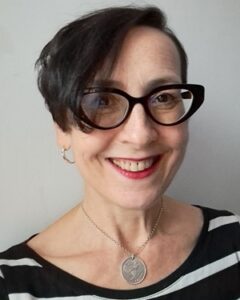
Breda Corish
Talk
tbc
The census of 1851 was the first to record place of birth, marital status and occupation for people living in Britain. The census that year also recorded a jump in London’s Irish-born population from 75,000 in 1841 to 109,000 in 1851, reflecting mass migration caused by An Gorta Mór, Ireland’s Great Famine of 1847-1852. While London’s Irish population had long been concentrated in poor central districts like Whitechapel and St Giles in the Fields, a small minority lived in Hackney and Stoke Newington. And their census records - as workers, wives, clergy and institutional inmates - illuminate less familiar aspects of the Irish presence in Victorian London.
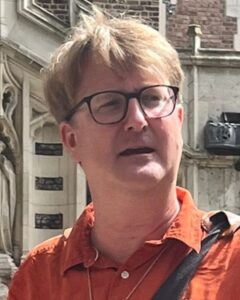
Nigel Smith
Talk
Tales from Hackney’s Memory Palaces
Since films first flickered on London screens in 1896 Hackney has been home to more than 60 cinemas ranging from grand architectural marvels to neighbourhood fleapits. Having delved into the archives, cinema historian and tour guide Nigel Smith tells the story of more than 100 years of cinema-going in the borough. Nigel Smith is a lifelong movie nerd. He’s part of the team producing BBC Radio 4’s film and TV programme Screenshot, co-founded the long-running Tufnell Park Film Club and leads guided walking tours exploring London’s old cinemas. His website Memory Palaces aims to tell stories associated with 100 buildings in the capital that are or have been cinemas. Follow him on Instagram @nigelsmithwalks and find out more about his tours at memorypalaces.co.uk.
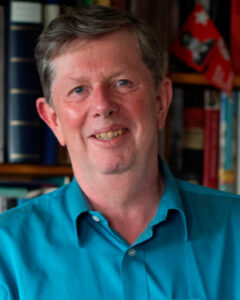
Andrew Whitehead
Talk
"We Shall Fight, We Will Win": the British New Left
In 1956, a new political movement emerged, explicitly socialist but rejecting both Soviet-style Communism and Labour's cautious embrace of social democracy. The New Left was concerned with ideas and culture. Those involved worked mainly outside political parties and electoral politics. In the 1960s, it helped shape the peace movement, student radicalism, the counterculture, opposition to the Vietnam war and the emerging Women's and Gay Liberation movements. It championed direct action and new forms of political communication, from agitprop poetry to silkscreen posters. Andrew Whitehead - who is working on an oral history of the New Left - traces the story of the New Left and its legacy and explores the role of Hackney politicos such as Sheila Rowbotham, David Widgery and the Grosvenor Avenue commune.
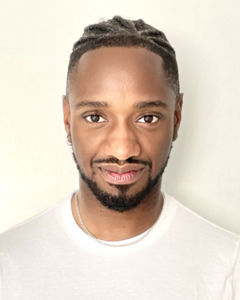
Richard Yeboah
Talk
From Hackney With Love: An Intimate History of Regeneration, Gentrification and Belonging
From Hackney, With Love: An Intimate History of Regeneration, Gentrification and Belonging is an insider exploration of the dramatic social, cultural and economic transformation of one of the most iconic places in Britain – my home, the London Borough of Hackney. My talk will explore the borough's history over the last three hundred years, and its transition from a middle class suburb to one of the poorest areas of Britain. But it will also examine through several social themes how Hackney has once again become a home for the middle classes in recent decades, which has been driven by the effects of regeneration, neoliberalism and gentrification - particularly since the 2012 Olympics, and has displaced existing working class communities in the process.

Amir Dotan
Talk
Look up, look down: Spotting local history everywhere
Our surroundings are filled with relics and remnants of the past, often hidden in plain sight. As we go about our daily lives, we rarely take the time to look up or down, missing the fascinating traces of history embedded in our environment. From disused coal hole covers and old boundary markers to servants’ doorbells, boot scrapers, and faded street signs, these overlooked artefacts tell the story of how people once lived and worked. Stoke Newington historian Amir Dotan will share intriguing examples of these historical treasures he has discovered while exploring Stoke Newington’s urban landscape, offering a new perspective on the rich history that surrounds us every day.
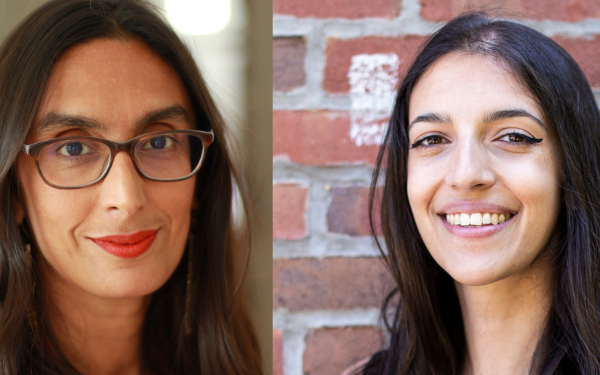
Sheela Banerjee and Lucy Fulford
Talk
From Hooghly to Hackney: Hidden Histories of Empire, Race and Migration
Journey through centuries and continents, and back to present-day Hackney, as authors Sheela Banerjee and Lucy Fulford share personal stories of migration to Britain, which reveal even bigger histories of empire and race. In What's in a Name? Friendship, Identity and History in Modern Multicultural Britain, Sheela – who has lived in Hackney for over 20 years – unravels the personal histories of friends and family through their names, including her own ancestors, who once lived by the banks of India’s Hooghly River. In The Exiled: Empire, Immigration and the Ugandan Asian Exodus, Lucy explores how the Ugandan Asian expulsion of the 1970s continues to impact the UK to this day.
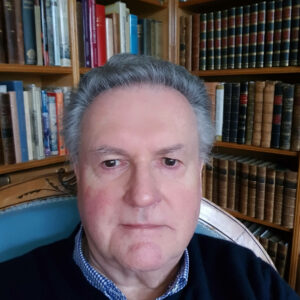
Jerry White
Talk
Radicals and Loyalists: Hackney in a Revolutionary City, 1789-1815
The outbreak of the French Revolution in the summer of 1789 was at first broadly welcomed in London, especially among the many radicals and dissenters of Stoke Newington and Hackney. But as the events in France became more bloodthirsty, and as apparently dangerous democratic agitations began to trouble the streets of London, an opposing view developed, especially among the property-owning classes of the suburbs, Hackney among them. In early 1793 France declared war on Britain and Holland and the London supporters of revolution quickly came to be seen as potentially treasonable allies of the enemy across the Channel. This led to an organised expression of loyalism, often taking a military tone, which faced outwards (to protect England from invasion) and inwards (to protect London from radical insurgents). Hackney was caught in the middle of this struggle, active radicals and blue-coated loyalists competing for the future of the parish, and of London.
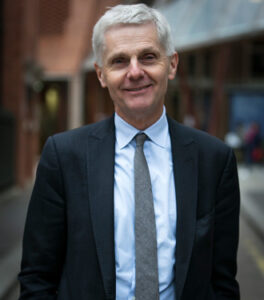
Tony Travers
Talk
Hackney Council at 60
Tony will talk about Hackney in the 60 years since it was created as one of today's London boroughs in 1965. He will consider the borough's extraordinary contemporary history, including both the high and low points. Few boroughs have changed as much in recent decades, with remarkable demographic and social differences affecting all parts of the borough. And what is likely to change in the years ahead? What might Hackney look like if and when it reaches its 100th birthday in 2065?
Matthew Green
Talk
More details to follow shortly.
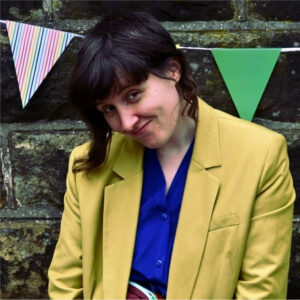
Kirsty Styles
Talk
A Tale of Two Cities: How East London's Silicon Roundabout Helped Enrich, Casualise or Automate
More details to follow shortly.
Lucinda Rogers
Talk
Ridley Road market
From Larry the oldest stallholder to Jacky the parrot, Ridley Road was Lucinda Rogers’s inspiration and studio for two months in 2017 as she created a portrait of its traders and stalls in a series of large documentary drawings made on the spot. She will show the drawings and talk about the resulting exhibition ‘On Gentrification’, which placed Ridley Road within the context of changes in the area and in the market itself. She will bring the market's story up to date with an account of recent happenings.
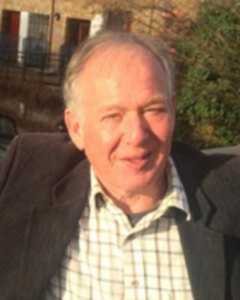
Laurie Elks
Talk
Hackney's Bloody-minded Heroes 2
After Hackney Heroes 1, delivered at the first Hackney History Festival, Laurie Elks continues his exploration of the bloody minded heroes who stood up for what they believed in and made Hackney a better place. In this talk he will consider the achievements of Mike Gray who led the campaign to save Sutton House; Elaine and Peter Gosnell who had a key role in the preservation of the Stoke Newington Reservoirs; Roland Muldoon who created the Hackney Empire theatre we know today and Marie Murray and Brian Cumming who have created the Curve Garden as Dalston’s unique green oasis.

Steven Spencer
Talk
The Salvation Army in Hackney
The Salvation Army ran three rescue homes for women at 44-48 Navarino Road in Dalston between 1885 and 1889. This talk will look at the development of these rescue homes and explore in detail the lives of a selection of the more than 300 residents. Some of these women came from Hackney but many more came from all parts of the UK and even other countries.
Mark Gorman
Talk
Down with the Fences!” – the long struggle for London’s open spaces
For hundreds of years London has been growing ever larger, its boundaries spreading from the confines of the medieval city and swallowing up once rural villages such as Hackney, covering London’s countryside with housing. After 1800 growth intensified to meet the ever-increasing demands of industry and commerce, and the threatened loss of London’s green spaces aroused increasing opposition. Mark Gorman tells the story of the campaigns to save London’s open spaces, notably the landmark struggle for Epping Forest, as well as the fight to save Hackney Downs and other local open land. Highlighting the role of popular protest in these campaigns, this is the story of ordinary Londoners and their part in saving London’s green spaces.
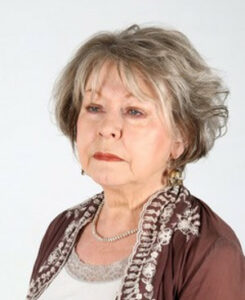
Rosie Llewellyn-Jones
Talk
Hackney and the East India Company
There were a number of links between the Company, founded in 1600 and Hackney, then a small country village. An early owner of Sutton House, Captain John Milward was a silk-merchant and governor of the Company who found Hackney conveniently situated – east of the city of London where the Company had its headquarters and north of the East India Docks where imported goods arrived. There were other connections too, some rather strange and sad like the Pembroke House Asylum for Britons, mainly soldiers, who experienced mental illness while serving in India and were shipped to Hackney to recover. The borough also provided a home for ayahs, Indian nursemaids who had accompanied British families home and then looked for a return passage to India. Dr Llewellyn-Jones is an historian of colonial India and particularly interested in the impact that the East India Company had both abroad and at home.
Neil Martinson
Talk
Hackney: Echoes Through Time - A photographic journey over fifty years
Drawing on his unique archive of photographs taken fifty years ago,
Neil reveals more unseen images in parallel with those he has taken
over the past two years. His images are powerful narratives that delve deep into
the human experience, offering a raw, unfiltered look at the struggles, joys, and
resilience of the people of Hackney. He reveals, in often surprising ways,
the profound changes that have taken place over half a century, and what remains.
Jill Drower
Talk
1967 - No Two Elephants are the same - Performance Art, LSD and Bent Coppers in the Sixties Counterculture.
A talk about the life and times of the flower child dance troupe known as the Exploding Galaxy, who lived as a commune in Dalston. In this talk, Jill Drower links London’s hippies back to their family wartime experiences - the Blitz, rationing and ‘make do and mend’, as well as to a host of other influences that made the British counterculture what it was. Starting in a night club in March 1967, and led by the now world-famous artist David Medalla, the group grew in size and notoriety until the end of 1968. During this time, they developed from semi-naked writhing on stage to becoming a living artwork, and an aesthetic experiment. The inhabitants at 99 Balls Pond Road were extremely concerning to mainstream society and the authorities. Reaction led to tabloid condemnation, bricks through the window and police plantings . Following these relentless attacks, the group started to disperse. By the end of 1968 the troupe had largely broken up. The house was sold in early 1969.
Ken Worpole
Talk
A Fortunate Man: John Berger in Hackney
John Berger (1926 – 2017) was one of Europe’s most important post-war writers and intellectuals, admired across the world. Storyteller (his own vocational preference), Booker Prize -winning novelist, filmmaker, essayist, poet and artist, he also co-created one of British television’s genuine masterpieces, ‘Ways of Seeing’, first screened in 1972, and directed by Mike Dibb. It is often forgotten that he was born in Filey Road, Stoke Newington, to Miriam and Stanley Berger. John’s father, Stanley, was a secular Jew who converted to Catholicism, was awarded a Military Cross in the First World War and subsequently an MBE. The young Berger was sent to a private school in Oxford, joined the army in 1944 – 1946 then attended Chelsea School of Art, intending to become a painter, but a much richer creative life followed in many artistic forms. In the early 1970s he met Glenn Thompson, the black American draft-resister who founded the Centerprise Bookshop project in Hackney, and in 1974, learning from the publishing experience at Centerprise, they set up the Writers & Readers’ Publishing Co-operative. For this event, Stoke Newington-based writer & social historian Ken Worpole will be in discussion with writer and curator Gareth Evans, a close friend / publisher of Berger, and organiser of an international festival on Berger’s work in 2005. Together they will be exploring John Berger’s formative years in Hackney and London’s left-wing bohemian culture.
Tony Rich
Talk
Borough Under Siege: Stoke Newington’s Wartime Civil Defence Story
Tony Rich, Independent Research Historian and Psychogeographer, delves into the remarkable story of how Stoke Newington braced itself against the dangers of the Second World War through its civil defence and air raid precautions (ARP). This presentation highlights the concentrated planning, community mobilisation, and heroic efforts of local wardens, fire services, first aid teams, and volunteers. Learn about the construction of bomb shelters, the role of women in the defence effort, and the borough’s response to the devastation of the Blitz. Through archival photos, personal accounts, and historical records, discover how London's smallest metropolitan borough exemplified strength and solidarity during one of the darkest periods in history.
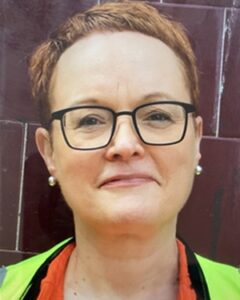
Sue Doe
Talk
Women from Hackney History Volume 2
The second volume of Women from Hackney’s History features women whose stories illuminate the history of today’s Borough. Sue will talk about some of the 115 women featured including Suffragettes, a magician, entrepreneurs, entertainers, politicians, and a boxing chimney sweep.
Edward Loft etc
Talk
Stoking up Trouble
Stoke Newington police station became one of the most notorious in the country after a number of major incidents there in the 1980s and 1990s. The death of Colin Roach inside the station in 1983 provoked great anger in the community and many responses. There were also many disputed arrests with people claiming they had been falsely accused, cases which were monitored and logged by the Hackney Community Defence Association. The Metropolitan police then launched an investigation into alleged corruption at the station called Operation Jackpot. The Guardian covered the story in 1992 and was sued for libel by eight officers. This led to a trial which ended in a victory for the Guardian, the first of 95 libel cases brought by the Police Federation against newspapers that they had lost. Chas Loft and Graham Smith of the HCDA and Duncan Campbell, who covered the case for the Guardian, will talk about those times.
Deborah Cohen
Talk
Healthcare in Hackney
More details to follow shortly.
Pete Carty & Travis Elborough
Talk
High Art and Low Life in 1990s Hoxton
Travis Elborough interviews Peter Carty about his novel Art. Art is a dark satire about the birth of Young British Artists in early 1990s Hackney, faithfully reflecting the period and its creative obsessions. Illuminating, moving and blackly funny, it mercilessly exposes the pretensions of contemporary art, as well as the unrestrained hedonism and low life that ran alongside in the streets of Hoxton and Shoreditch. This was a period when organised crime, urban blight and fascism were prominent locally. The novel’s backdrop is the gentrification that the artists helped to kick-start, and which has dramatically transformed the area over the past three decades.
Tahiara Munshi & Cllr Rathbone
Talk
Trading matters: The importance of Hackney's markets and their place in the development of the local community
A history of Hackney's markets and their recent resurgence in popularity.
Eithne
Talk
Life Under Lockdown: On Mehetabel Road and Isabella Road in Hackney 2020
Writer and photographer, Eithne Nightingale, and her neighbours discuss Life Under Lockdown: On Mehetabel Road and Isabella Road in Hackney 2020 with Hackney resident and professor of historical geography at Queen Mary University of London, Alastair Owens. The book features photos taken by Eithne of her neighbours on their doorsteps holding objects that sustained them through lockdown. Enjoy portraits of a group of Australian paramedics living together; older people living alone and shielding; home-schooling including by a family living under threat of demolition on Marian Court; the growth of Hackney Bread Kitchen in a neighbour's shed. Join in discussions on the long-term impact of COVID-19 on our relationship to home – on children’s education, patterns of work, relationships within and beyond the household, and neighbourliness. A collaborative venture with neighbours providing artwork (Jenny Blanchard and Bluebelle), text, editing and design (Claudia Costa-Rowse).
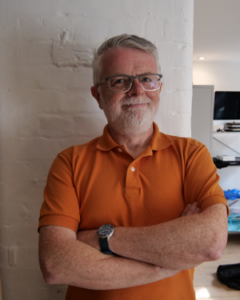
Andrew Harrison
Talk
The Angry Brigade – Anarchy In N16
If you’ve ever turned to walk down Amhurst Road from Stoke Newington Road, you’ll have unwittingly passed the HQ of one of Britain’s most infamous cases of political violence. Between 1970 and 1972, Britain's first urban guerrilla group the Angry Brigade – based in a flat at 359 Amhurst Road – carried out a campaign of bombing and attempted assassination which targeted government buildings, banks, and other symbols of capitalism.
Andy Beckett
Talk
Gentrification and Politics
Invasion of the middle-class lefties: what does the relationship between gentrification and politics in Hackney since the 1970s tell us about the borough, and about the broader, generally leftward shift since then in London and other British cities.
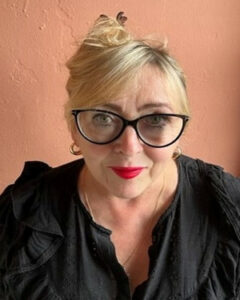
Cat Arnold
Talk
The Invisible Enemy – the 1918 Spanish flu pandemic in Hackney
In the last year of WWI, the world was devasted by a pandemic of Spanish flu. Killing up to 100m people worldwide, Spanish flu was the deadliest outbreak since the Black Death. Spanish flu killed troops on both sides of the conflict, but what the impact for those left behind on Civvy Street? In this talk, Catharine Arnold discusses the effects of Spanish flu on Hackney. Already vulnerable due to poverty, deprivation, and four long years of war, how did Hackney respond to the invisible enemy, killer flu? Catharine Arnold is the author of Pandemic 1918, the story of the deadliest influenza in history. Catharine’s books include Necropolis, London and its Dead and Bedlam, London, and its Mad.
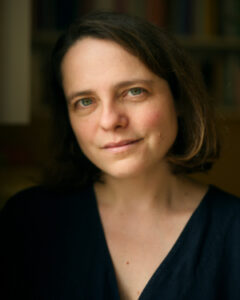
Kate Murray-Browne
Talk
One Girl Began: A feminist history of Hackney
Kate Murray-Browne was born in London and worked in publishing for ten years before becoming a writer. Her critically acclaimed first novel, The Upstairs Room, was published in 2017 and selected as a Book of the Year in The Times. Her second novel, One Girl Began, is set over 111 years in Hackney and tells the story of three women separated by history but connected by the same building: a box factory in the Edwardian era, a derelict squat in the 1980s and luxury flats by 2020. It was described by the Hackney Citizen as 'a feminist history of the borough in fictional form'. Kate lives in Hackney with her family.
Sue Eliott Nicholls & contributors from Immediate Theatre
Talk
The Hackney & Newham History Social Club: Different people, walking the same streets all with their own unique stories to tell.
Funded by The Heritage Lottery Fund, we have been capturing the oral histories of the diverse communities arriving in East London between 1939-1990. Our podcast series uncovers the life stories of some of these people: people who have rejuvenated the shops, delivered the babies, made clothes, worshipped, partied, and watched over the London Borough Of Hackney over fifty years. Presenter Sue Elliott-Nicholls will be joined by members of our Production Club who have together been researching and interviewing across the borough, aiming to preserve those accounts before they are lost forever, and introducing the people behind these amazing stories. You can listen to the podcast at: The Hackney and
Newham History Social Club | Immediate Theatre.
Quiz
Lucy Madison
Quiz
Hackney History "Pub" Quiz
Join us for a fun pub-style quiz about all things 'Hackney History'! Written by professional quiz writers and Hackney history enthusiasts, you can expect Hackney-history-based general knowledge, picture, music, literary and connection rounds, with a variety of questions tailor-made for all knowledge levels. 2 hours with comfort and refreshment break half-way.
